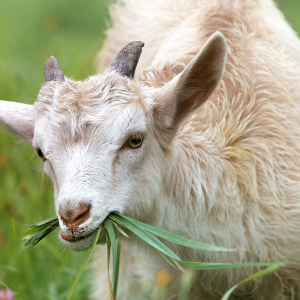
This paper assesses the extent to which national dietary recommendations for animal products could be met by livestock fed with low opportunity cost biomass (LOCB) such as food waste, grass and by-products. It finds that animal products fed with domestically available LOCB could provide between 22% (Netherlands) and 47% (Switzerland) of nationally recommended protein intakes.
Abstract
Background
National food-based dietary guidelines (FBDGs) are generally designed from a human health perspective and often disregard sustainability aspects. Circular food production systems are a promising solution to achieve sustainable healthy diets. In such systems, closing nutrient cycles where possible and minimising external inputs contribute to reducing environmental impacts. This change could be made by limiting livestock feed to available low-opportunity-cost biomass (LOCB). We examined the compatibility of national dietary guidelines for animal products with livestock production on the basis of the feed supplied by available LOCB.
Methods
We investigated whether the national dietary recommendations for animal products for Bulgaria, Malta, the Netherlands, Sweden, and Switzerland could be met with domestically available LOCB. We used an optimisation model that allocates feed resources to different species of farm animals. Of the resulting scenarios, we assessed the nutritional feasibility, climate impact, and land use.
Findings
Our results showed the environmental benefits of reducing the recommended animal products in the FBDGs, and that animal products from LOCB could provide between 22% (Netherlands) and 47% (Switzerland) of total protein contributions of the FBDGs. This range covers a substantial part of the nutritional needs of the studied populations. To fully meet these needs, consumption of plant-based food could be increased.
Interpretation
Our results contribute to the discussion of what quantities of animal products in dietary guidelines are compatible with circular food systems. Thus, national dietary recommendations for animal products should be revised and recommended quantities lowered. This finding is consistent with recent efforts to include sustainability criteria in dietary guidelines.
Funding
Swiss National Science Foundation and the Dutch Research Council.
Reference
Frehner, A., Cardinaals, R.P., de Boer, I.J., Muller, A., Schader, C., van Selm, B., Van Hal, O., Pestoni, G., Rohrmann, S., Herrero, M. and van Zanten, H.H., 2022. The compatibility of circularity and national dietary recommendations for animal products in five European countries: a modelling analysis on nutritional feasibility, climate impact, and land use. The Lancet Planetary Health, 6(6), pp.e475-e483.
Read the full paper here. See also the TABLE explainer What is feed-food competition?







Post a new comment »